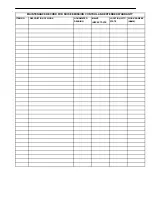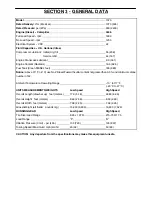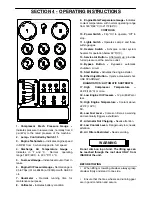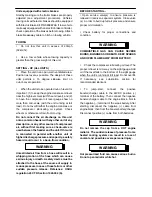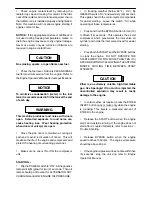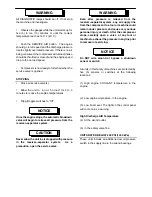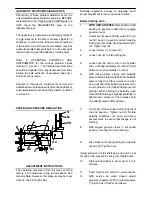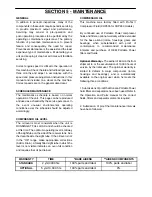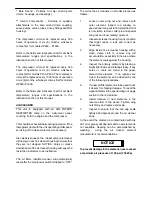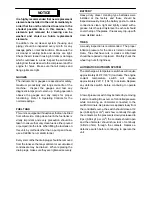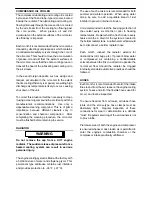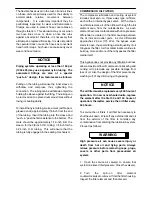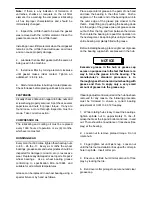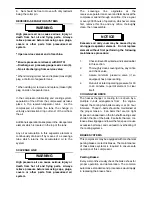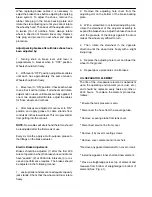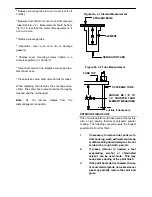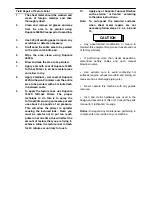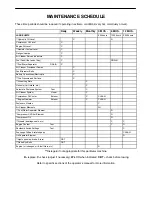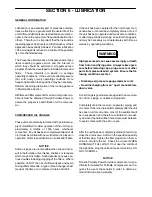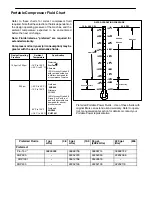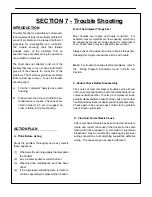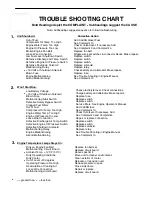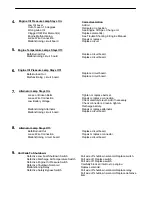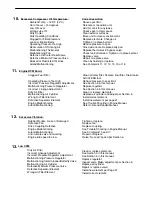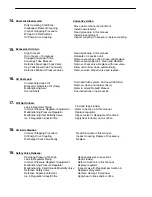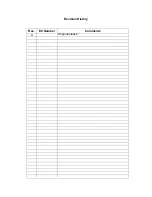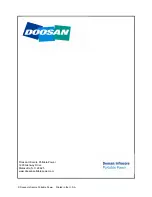
6. Nut should be free to move with only restraint
being the cotter pin.
RECEIVER--SEPARATOR SYSTEMS
WARNING
High pressure air can cause serious injury or
death from hot oil and flying parts. Always
relieve pressure before removing caps, plugs,
covers or other parts from pressurized air
system.
* Open service valve at end of machine.
* Ensure pressure is relieved, with BOTH:
-- Discharge air pressure gauge reads zero (0).
-- No air discharging from service valve.
* When draining oil, remove and replace (make tight)
plug at bottom of separator tank.
* When adding oil, remove and replace (make tight)
plug on side of separator tank.
In the compressor lubricating and cooling system,
separation of the oil from the compressed air takes
place in the receiver--separator tank.
As the
compressed air enters the tank, the change in
velocity and direction drop out most of the oil from
the air.
Additional separation takes place in the oil separator
element which is located in the top of the tank.
Any oil accumulation in this separator element is
continuously drained off by means of a scavenge
tube which returns the accumulated oil to the
system.
SCAVENGE LINE
WARNING
High pressure air can cause serious injury or
death from hot oil and flying parts. Always
relieve pressure before removing caps, plugs,
covers or other parts from pressurized air
system.
The
scavenge
line
originates
at
the
receiver--separator tank cover and terminates at the
compressor airend through an orifice. Once a year
or every 2000 hours of operation, whichever comes
first, remove this line and any orifice, thoroughly
clean, then reassemble.
NOTICE
Excessive oil carry--over may be caused by an
oil--logged separator element. Do not replace
element without first performing the following
maintenance procedure:
1.
Check oil level. Maintain as indicated earlier
in this section.
2.
Thoroughly clean scavenge line, any orifice
and check valve.
3.
Assure minimum pressure valve (if so
equipped) has proper setting.
4.
Run unit at rated operating pressure for 30
to 40 minutes to permit element to clear
itself.
COOLING FAN DRIVE
The heat exchanger or cooling fan is driven by a
multiple V--belt arrangement from
the engine.
Inspect the cooling fan belts weekly or at 50 hour
intervals. These V--belts should be maintained at
the proper tension. Fan belts that are too tight
impose an undue load on the fan shaft bearings and
shorten the life of the belts. Fan belts that are too
loose allow slippage and lower the fan speed, cause
excessive belt wear, and can lead to overheating of
the cooling systems.
BRAKE SYSTEMS
This compressor may be equipped with mechanical
parking brakes or electric brakes. The maintenance
of these brake systems is required to ensure safe
operation of this compressor.
Parking Brakes:
Every six months visually check the brake shoes for
proper operation and deterioration. The common
automotive standards and procedures would apply
in replacing the brake shoes.

